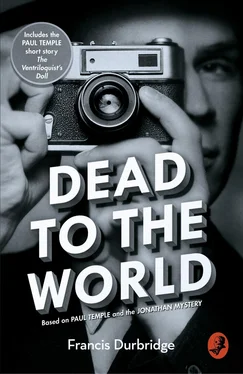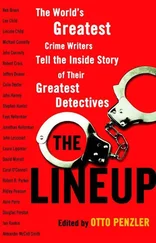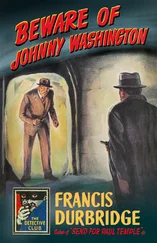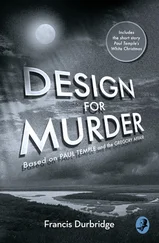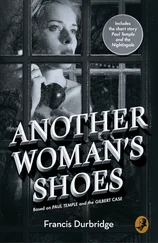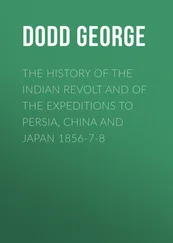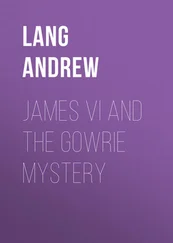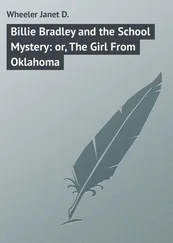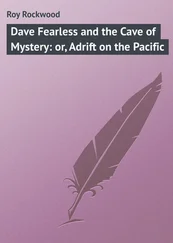FRANCIS DURBRIDGE
Dead to the World
PLUS
The Ventriloquist’s Doll
WITH AN INTRODUCTION BY MELVYN BARNES

Copyright Table of Contents Cover Title Page Copyright Introduction Chapter One Chapter Two Chapter Three Chapter Four Chapter Five Chapter Six Chapter Seven Chapter Eight Chapter Nine Chapter Ten Chapter Eleven Chapter Twelve Chapter Thirteen Chapter Fourteen Chapter Fifteen Chapter Sixteen The Ventriloquist’s Doll Footnotes By the same author About the Author Also in This Series About the Publisher
COLLINS CRIME CLUB
an imprint of HarperCollins Publishers Ltd
1 London Bridge Street
London SE1 9GF
www.harpercollins.co.uk
First published in Great Britain by Hodder & Stoughton 1965
‘The Ventriloquist’s Doll’ first published by Associated Newspapers
in the Daily Mail Annual for Boys and Girls 1952
Copyright © Francis Durbridge 1965
Introduction © Melvyn Barnes 2018
Cover layout design © HarperCollins Publishers Ltd 2018
Francis Durbridge asserts the moral right to be identified as the author of this work.
A catalogue copy of this book is available from the British Library.
This novel is entirely a work of fiction. The names, characters and incidents portrayed in it are the work of the author’s imagination. Any resemblance to actual persons, living or dead, events or localities is entirely coincidental.
All rights reserved under International and Pan-American Copyright Conventions. By payment of the required fees, you have been granted the non-exclusive, non-transferable right to access and read the text of this e-book on screen. No part of this text may be reproduced, transmitted, down-loaded, decompiled, reverse engineered, or stored in or introduced into any information storage and retrieval system, in any form or by any means, whether electronic or mechanical, now known or hereinafter invented, without the express written permission of HarperCollins.
Source ISBN: 9780008276355
Ebook Edition © June 2018 ISBN: 9780008276362
Version: 2018-06-01
Table of Contents
Cover
Title Page FRANCIS DURBRIDGE Dead to the World PLUS The Ventriloquist’s Doll WITH AN INTRODUCTION BY MELVYN BARNES
Copyright
Introduction
Chapter One
Chapter Two
Chapter Three
Chapter Four
Chapter Five
Chapter Six
Chapter Seven
Chapter Eight
Chapter Nine
Chapter Ten
Chapter Eleven
Chapter Twelve
Chapter Thirteen
Chapter Fourteen
Chapter Fifteen
Chapter Sixteen
The Ventriloquist’s Doll
Footnotes
By the same author
About the Author
Also in This Series
About the Publisher
Wealthy American Robert Scranton asks Philip Holt to investigate the murder of his son at an English university, with the only leads being a postcard signed ‘Christopher’ and a missing signet ring …
When Dead to the World was published in March 1967, regular listeners to Francis Durbridge’s radio serials featuring Paul Temple could hardly have failed to be reminded of the plot of Paul Temple and the Jonathan Mystery , particularly as a new production had been broadcast less than four years earlier. Dead to the World was indeed the novelisation of that radio serial, but with Paul and Steve Temple replaced by photographer Philip Holt, his secretary Ruth Sanders and Detective Inspector Hyde. It was Durbridge’s second novel to feature these characters, their having debuted in his previous book The Desperate People , the novelisation of his 1963 television serial of the same name.
At that time, Francis Durbridge (1912–1998) was a long-standing, popular and distinctive writer of mystery thrillers for BBC radio and television who was soon to dominate the professional and amateur theatrical stage. Today he remains best known as the creator of the novelist-detective Paul Temple, whose first appearance in the 1938 BBC radio serial Send for Paul Temple led to Paul and his wife Steve becoming cult figures of the airwaves, with further serials running on radio throughout the 1940s, ’50s and ’60s. There were also books, four black-and-white feature films and two spin-off BBC television series. But while the radio serials have enjoyed a twenty-first century renaissance on CD thanks to the efforts of the BBC’s audio publishers, and the films and TV episodes have appeared on DVD, some of the books, including Dead to the World , have until now been sadly neglected.
The radio serial Paul Temple and the Jonathan Mystery was first broadcast in eight episodes from 10 May to 28 June 1951, with Kim Peacock as Paul Temple. By the time of the new production (14 October to 2 December 1963) Peacock had long been succeeded by Peter Coke, who made the role his own with eleven appearances from 1954 to 1968. But the actress Marjorie Westbury warranted the label ‘definitive’ even more than Coke, given her twenty-three outings as Steve Temple from 1945 to 1968 opposite four different actors: Barry Morse, Howard Marion-Crawford, Kim Peacock and Peter Coke.
Paul Temple and the Jonathan Mystery begins when the Temples meet an American couple, Robert and Helen Ferguson, on a flight from New York. Soon afterwards they learn that the Fergusons’ son Richard has been murdered at his Oxford college, and that the only clues are a postcard from Harrogate signed ‘Jonathan’ and the disappearance of Richard’s signet ring. The ensuing plot was typical Durbridge fare and resulted in yet another international success, with European broadcasters using their own actors in translations that included the Dutch Paul Vlaanderen en het Jonathan mysterie (25 January to 29 March 1953), the German Paul Temple und der Fall Jonathan (17 September to 5 November 1954) and the Italian Chi è Jonathan? almost twenty years later (12 to 23 April 1971).
So what inclined Durbridge, relatively soon after the second UK radio production of Paul Temple and the Jonathan Mystery , to recycle this serial as the novel Dead to the World and in the process change the character names and replace his popular duo the Temples? It was by no means the first time he had done this, leaving his fans to ponder a question that has never been authoritatively answered. Although his radio serials firmly maintained his reputation over a period of thirty years, he probably wanted to be acknowledged as something more than the creator of Paul and Steve Temple and therefore deliberately set out to broaden his appeal to the reading public by providing a little variety. The first five Temple novels had faithfully followed his radio scripts, but he broke the mould by substituting different protagonists in Beware of Johnny Washington and Design for Murder (both 1951), even though both had begun life as the radio serials Send for Paul Temple (1938) and Paul Temple and the Gregory Affair (1946) respectively.
However, having then returned to writing Paul Temple into short stories, newspaper serials, novelisations and even an original novel, it was not until 1965 that Durbridge again took one of his own radio plots, Paul Temple and the Gilbert Case (1954), as the basis for a new standalone book, Another Woman’s Shoes , which was followed two years later by Dead to the World as the only other example of him recycling his own material in this way.
Читать дальше
